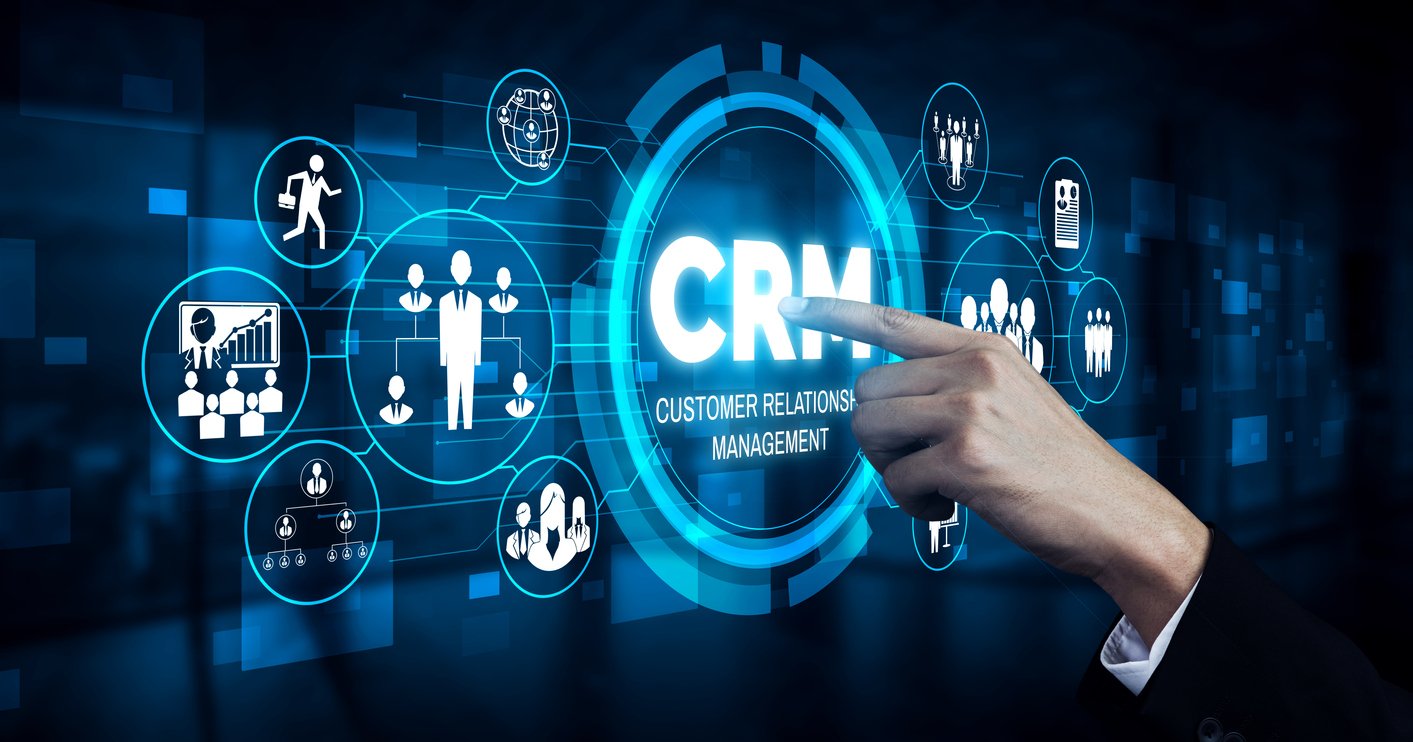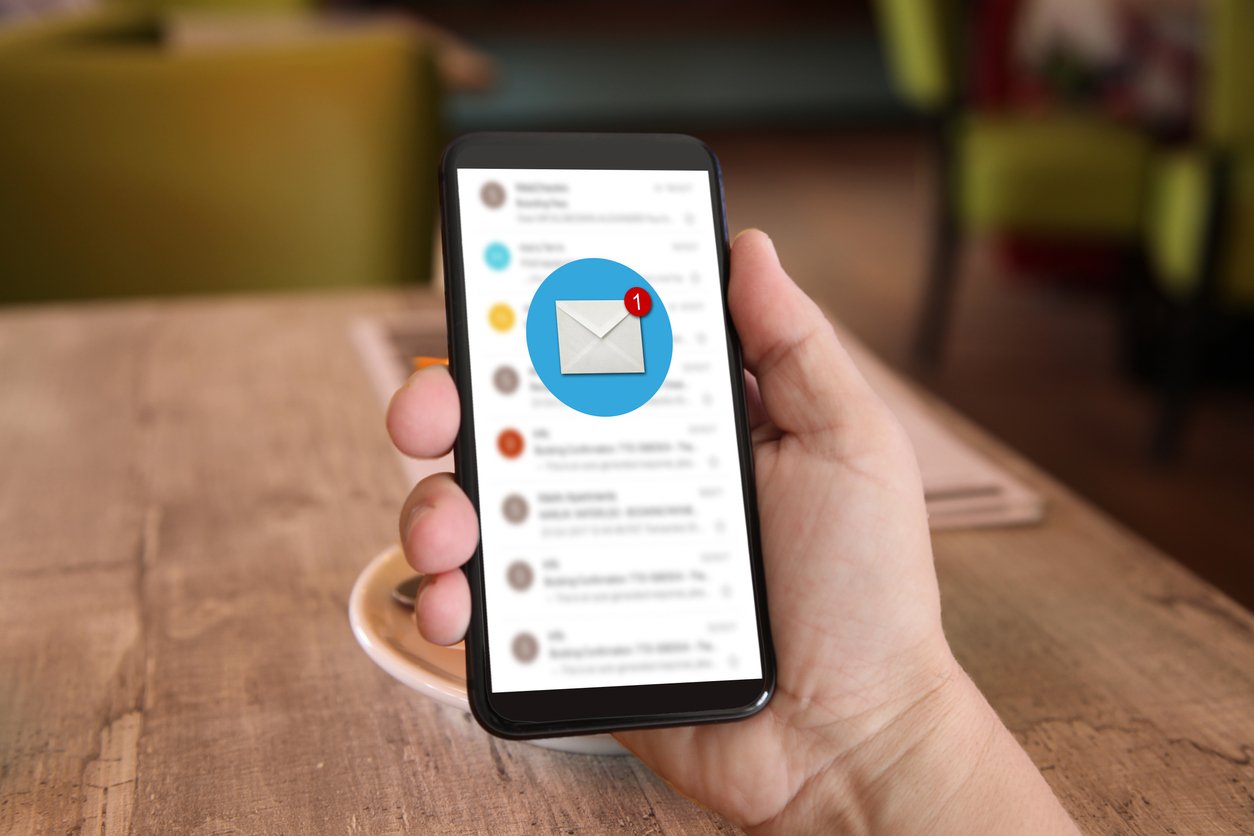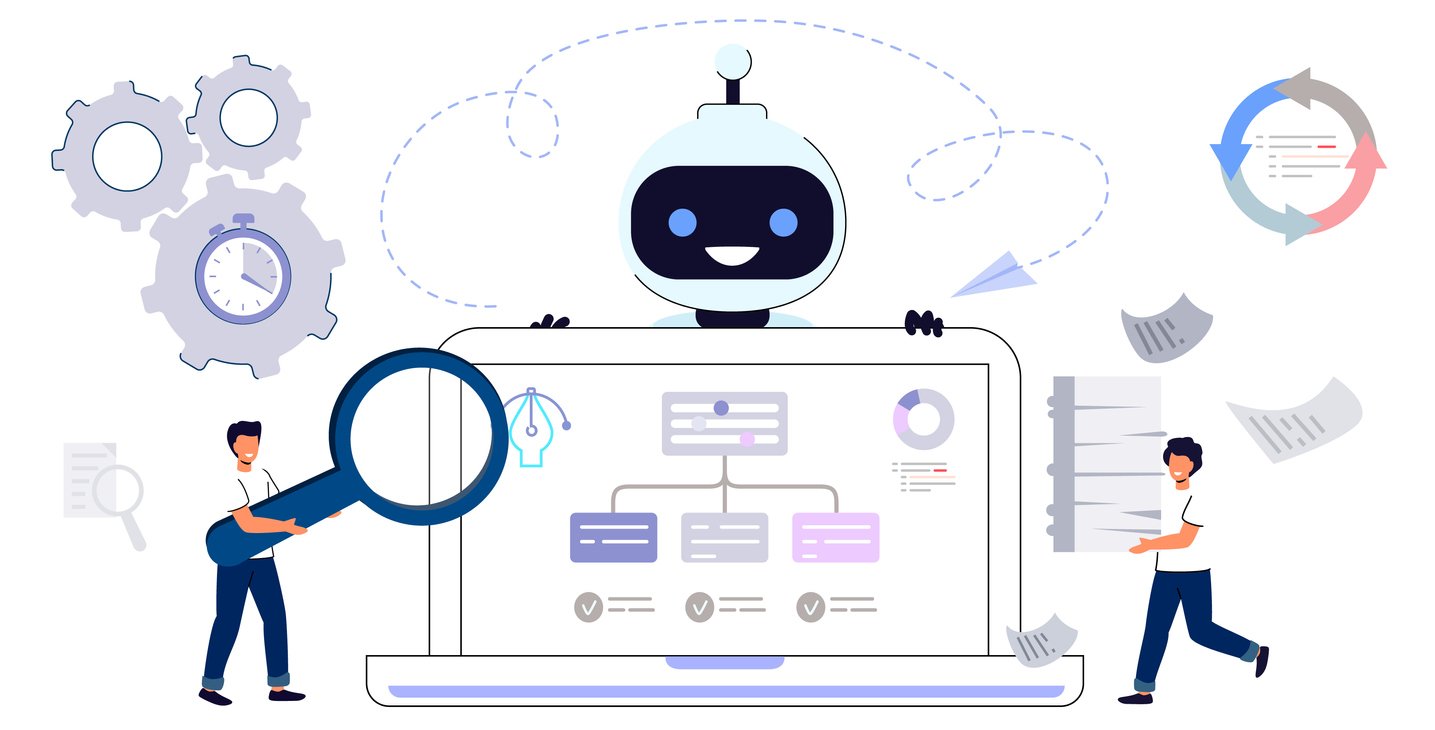
What is Call Scoring and How It Impacts Your Sales Team
 Updated on
Updated on
 By Bradley Kovacs
By Bradley Kovacs
Bradley Kovacs
Bradley has been passionate about technology since childhood, starting with Microsoft Flight Simulator at age six. In college, he automated his data e...
learn more
Bradley Kovacs
Bradley has been passionate about technology since childhood, starting with Microsoft Flight Simulator at age six. In college, he automated his data e...
Table of Contents
Table of Contents
In the world of sales, landing that multi-million dollar deal doesn't usually happen with just a phone call.
But that call is where the interaction typically starts. It's the gateway to further interaction and potentially a fruitful partnership.
It's essential, then, that that initial interaction is the best that it can be, which is comes down to how well your salesperson performs on the phone.
So, a salesperson or call center employee who spends a lot of time on the phone should have their performance measured, right?
And without a proper method of tracking your sales team performance, that initial interaction could be more of a miss than a hit. Missing the mark on that first customer touchpoint is a sticking point for many businesses, and many want to track how well their employees interact through phone calls.
But what form does that evaluation take?
That would be call scoring.
What is Call Scoring?

Call scoring is how a company evaluates its call data against a specific set of stands; these are usually staff performance-related, or metrics, KPIs, etc.
These standards are meant to serve as a baseline for the company's business goals and create guidelines for its staff, including how the team should expect to interact with their target audience.
Call scoring isn't just limited to performance, either. It can encompass many different aspects, including:
- Simply following predetermined call scripts
- Improving the call script process based on the different types of calls received
- Complying with company branding
- Properly using data governance and company-specific data security protocols.
- Following through on leads and general customer needs
- Improving customer retention
The words that most VIPs have come to mind when implementing call scoring are return on investment (ROI) and customer retention. These metrics are at the core of every business, and call scoring is one of the methodologies a company can use as its measurement tool.
Call scoring can be done:
- Automatically (with the right CRM)
- Manually by the company (via spreadsheets or call scoring templates)
- By a third-party expert.
Here are a few important notes about the different types of call scoring options for both small, medium, and large businesses.
Automated call scoring
If choosing automated call scoring, know that this method takes advantage of algorithms and allows a machine to automatically score a call based on categories set by a human. This is sometimes the fastest scoring method but not always the cheapest.
Manual call scoring
If the company chooses manual call scoring, this method is a lot more lift on company resources. Managers have a choice of listening in on the calls or listening to a recording at a later date. Employees can also listen to recordings of their own call in order to hear how they sound and perform a self-assessment.
Third-party call scoring
With a third-party option, the chosen company can perform the assessment and give feedback and statistics about the overall performance to the main company. This method is easiest to implement but can also be more costly in the long run.
Importance of Call Scoring for a Sales Team
Here's a lesser-known, but essential opinion in the B2B space: every call center or sales-related business should integrate call scoring.
Why?
There are three significant reasons.
- Enforces standards for good calls
- Improves customer retention
- Lifts ROI
First and foremost, call scoring creates standards for employee behavior.
It helps everyone on the sales team stay on the same page and provide the best customer service to current and potential customers. By creating standards for call interactions, every employee knows what is expected of them and how they can achieve the best performance.
Having call monitoring and scoring techniques means performance boundaries for call center staff. Those boundaries equal happy employees, which reduces absenteeism and staff retention problems. It truly is a win-win for managers and employees alike.
The second reason every business should include call scoring is that it makes customer retention easier.
Customers are more likely to come back if they have good experiences when dealing with employees, their problems are resolved quickly, and there is a good follow-up after the call. Call scoring makes this process simpler for the employee and helps set performance standards for every single interaction.
For sales teams, particularly, having standards means each person can sell correctly and according to company standards. No guerrilla sales tactics that lead to problems down the line, or unhappy leads that never convert.
Overall, a better interaction equals more happy customers, which increases ROI, which in turn makes everyone happy.
Speaking of ROI, tracking metrics is the final reason a company should implement call scoring for the sales team. Call scoring is used in a variety of different settings to help a company meet and exceed its metrics and KPIs. This process is all about helping salespeople to meet their full potential and, by extension, help the company meet its full potential.
Call scoring is really all about making everyone happy, from the customers, employees, managers, and the company's sentient bottom line.
6 Categories of Call Scoring
With call monitoring, scoring employees becomes easier.
And every business can implement call scoring with a little bit of extra effort, as long as they define exactly what categories they want to measure, how to measure each category, what those measurements mean, and how to communicate that information.
Since there are so many options for what exactly is measured, here are the top six main categories of aspects to score in a call. These categories are designed to cover the call from the moment the customer contacts the company until the issue is completely resolved or the sale is complete.
We're going to examine call scoring across six categories:
- Greetings
- Account verification
- Verifying contact information
- Customer service quality
- Wrap-up
- Follow-up
Greetings
These are important because they are the first impression a customer has of that sales team member and will help to set their opinion of the company.
If a customer is greeted in a friendly way at the beginning of the call, it will put them in a better mood for the rest of that interaction. On the other hand, if a customer feels like an employee has been rude, pushy, talked over them, or generally unattentive, they will see the rest of the call in a bad light.
Account verification
This just confirms the identity of the customers and has them pass any security checks. The step is vital because the customer's data is at risk if this check is not performed properly. Once the customer's identity is confirmed, the case history can be seen, and the customer can be helped properly.
Verifying contact information
Verifying the customer's contact information is a way to make sure that the customer can be properly contacted in the future and that any issue is resolved. The information needs to be confirmed by the customer, and any missing information added.
Although this step isn't always crucial to a sales team, data protection should be paramount in every employee's mind. If the sales team member doesn't identify who they are speaking with and instead begin making deals with someone not authorized to do so, a company can become liable for serious problems in the future!
Customer service quality
This spans across the entire call or interaction. Employees are scored on how well they listen to and respond to the customer. Employees must respond to customers in an empathetic way that shows that they listened to the customer and understood their concerns and opinions.
For sales teams, this means often doing more listening than talking. Many potential customers will explain what's most important to them through their call interaction, including:
- Pain Points: what does their business need that your company can provide?
- Objections: If the customer states they don't need your services, what are these objections so the sales team can revisit next time?
- Budget: What kind of budget does the customer have, if any?
Wrap up
A wrap-up happens at the end of the call when employees offer a solution to any problem the customer might have and summarize the call for the customer so that everyone is on the same page. That summary is important no matter who the customer is or who they are talking to. Summaries let everyone know that the interaction was a good one and that everyone's takeaways are the same.
Follow up
This step happens after the call and shows that the company cares about its customers and will go the extra mile to make sure any issues are resolved and the customer is satisfied. The follow-up should be done within a set amount of time, as set by the company.
For sales teams, the closing and follow-up might be the most important interaction someone has. This follow-up means a relationship has been established, and further interactions are possible.
Although sales teams might not always check every single box, many of them come close to each category of call scoring. (And those companies that need to take their sales experience further with a sales plan, check out these expert tips!)
How is Call Scoring Measured?

Before deciding how to correctly measure call scoring for your company, it's important to choose your methodology first.
There are two main methods - starting from scratch and utilizing a third-party expert. There are pros and cons to both.
Starting from scratch can be an appealing option for smaller to medium-sized companies. When deciding how to start call scoring, it is important to understand how the forms work and how to get one, especially since there are so many call scoring templates on the internet!
When creating a call scoring sheet from scratch, it is important to define the key factors that you want to focus on. Decide what is most important to the company and what is most important to the customers. This is the critical first step and shouldn't be skipped.
Looking at call scoring templates and sample sheets can give you an idea of the best format and how to organize your sheet. It can also give you a good idea of what other companies have defined as important. Creating a process map for quality monitoring can help decide which calls should be monitored, who can replay the call, who shouldn't reply to the call, and many other smaller aspects of the call scoring.
Some examples of information that a made-from-scratch template should include is:
- How fast, or slow was the call answered? Was it answered in a timely manner?
- Was the customer placed on hold, or was there a long wait time?
- Was the salesperson friendly and personable on the call first answer?
- Did the salesperson seem to have an attitude or wasn't attentive during the entire call?
- Did the call address all of the client's pain points or issues they brought up?
- Was the audio quality solid? Was there background noise or other problems?
If the homegrown method isn't for your company, there are also third-party companies that will tailor a call scoring methodology for your company.
Using a third-party company that can help streamline that process and free up company time for the evaluations. A third party can use an existing form, perform the assessments, and compile the data in ways that will be useful for the company. At a glance, you will be able to see any problem areas, what is going well, and what can be fixed.
But this method will for sure cost more money.
This is potentially money well spent, however. Third-party companies are numerous; many of them have been around for years and perfected their craft. They take the time that your business would spend doing all of the automated call scorings and neatly package the results. This saves on staff time, paperwork, evaluation time, technology, and much more.
To compare the two options, here is a handy table:
|
Company-Created Call Scoring Methodology |
Third-Party Call Scoring Methodology |
|
More time-consuming, but deeply tailored |
Less time consuming, tailored to your business |
|
More personal, adapted to your sales team |
More templates to choose from |
|
Staff-time cost - Template creation/evaluation |
Paid to Company, less staff time |
|
Staff-time cost - Monitoring |
Paid to Company, no staff time |
|
More control over decisions |
Less control over decisions, but less work overall |
Call Scoring Methods

There are a few methods to evaluate call scoring. Any of these methods can be used together or by themselves.
Customer surveys
There are multiple ways to conduct a customer survey. This can be automated or done manually by an employee. Many surveys are conducted over the phone, chat, or email.
Conducting customer surveys is a fast way to see how an interaction went for a customer and to evaluate if there was anything else that could have been done to resolve problems.
Call recording, monitoring, and documenting
The bulk of call scoring is made up of evaluating the actual calls. Managers can listen in to calls, but many times they are recorded and evaluated later. Scoring the actual calls means that multiple different people can listen to a call and decide if everything was done right instead of only hearing from one person.
An employee's tone and words can be judged, and advice can be given to improve performance. Employees can also listen to the calls so they can hear how they sound and how they could have improved. They can also hear if they did a great job and handled a lead exceptionally well.
(Ringy has call logs and call recordings built into our CRM for this exact purpose!)
Third-party assessment
The calls can also be recorded and sent to a third party to do an assessment. The benefit of this method is that the person doing the evaluation will not know the employee, and there will be less bias. The evaluations will be more objective.
These companies will also compile the data from all the evaluations so that larger trends can be seen. The company can look at individual performance or the team as a whole.
Setting Up a Call Scoring System
A well-designed call scoring system is a powerful tool for boosting contact center performance. Here's a breakdown of the key steps involved in setting up a call scoring system:
1. Defining Criteria
The foundation of any call scoring system lies in establishing clear criteria for success. This involves identifying the key aspects of an agent interaction that contribute to a positive customer experience. Common criteria might include:
- Customer Satisfaction: Did the agent effectively address the customer's needs and leave them feeling satisfied?
- Product Knowledge: Did the agent demonstrate a strong understanding of your products or services?
- Communication Skills: Did the agent communicate clearly, professionally, and in a way that fostered rapport with the customer?
- Call Resolution: Did the agent efficiently resolve the customer's inquiry or issue?
- Adherence to Policies: Did the agent follow company policies and procedures throughout the call?
Call scoring templates can be helpful starting points for defining your criteria. However, it's crucial to tailor these templates to your specific business needs and customer interactions.
2. Weighting Scores
Not all criteria are created equal. Assigning weights to different criteria reflects their relative importance in your overall call scoring process. For instance, in a technical support center, resolving customer issues efficiently might hold a higher weight than building rapport, while the opposite might be true for a sales call.
By weighting scores, you ensure your evaluation process aligns with your business priorities. This allows you to identify areas where even small improvements can have a significant impact on key performance indicators (KPIs).
3. Creating a Scoring Model
Once you've defined your criteria and assigned weights, it's time to develop a scoring model that fits your business needs. This model will determine how points are awarded or deducted based on agent performance across the established criteria.
There are two main approaches to consider:
- Manual Call Scoring: Supervisors or designated evaluators listen to recorded calls and assign scores based on the defined criteria. While this method offers a high level of control, it can be time-consuming and subjective.
- Automated Call Scoring: Software utilizes speech analytics and natural language processing to score calls based on pre-defined parameters. This approach saves time and resources but may require ongoing calibration to ensure accuracy.
The ideal model for your organization will depend on your budget, call volume, and desired level of detail in the evaluation process.
Implementing Call Scoring in Your CRM
Once you've established your call scoring system, the next step is to seamlessly integrate it with your CRM platform. Here's a closer look at the key aspects of implementing call scoring within your CRM:
Integration
Integrating call scoring with your CRM system ensures that all call-related data is centralized, making it easier to track, analyze, and improve call quality.
To successfully integrate call scoring with your CRM:
- Choose the Right CRM Platform: Select a CRM that supports call scoring features or allows for easy integration with third-party call scoring tools. Psst! Ringy can do all that!
- API Connectivity: Utilize APIs (Application Programming Interfaces) to enable seamless communication between your call scoring system and your CRM.
- Custom Fields and Templates: Set up custom fields and templates within your CRM to capture call scores and other relevant metrics.
Automation
Manual call scoring, while allowing for in-depth analysis, can be a time-consuming process, especially for high-volume contact centers. Implementing automated call scoring through your CRM helps streamline the evaluation process.
Here's how automation works: Your call scoring software analyzes recorded calls based on the pre-defined criteria you established. Speech analytics and natural language processing technology extract key elements from the conversation, such as keywords, sentiment, and adherence to call scripts. This data is then used to automatically generate call scores within your CRM.
Automation frees up valuable resources for supervisors and allows them to focus on coaching and development opportunities for agents. It also ensures consistent scoring across the entire team, reducing subjectivity in the evaluation process.
Data Synchronization
Real-time data synchronization ensures that all relevant information is up-to-date, enabling better decision-making and more effective contact center quality management.
To achieve real-time data synchronization:
- Unified Data Streams: Set up a unified data stream that continuously feeds call scores and related metrics into your CRM.
- Cloud-Based Solutions: Utilize cloud-based call scoring and CRM solutions, like Ringy, to facilitate seamless data exchange and real-time updates.
- Regular Audits: Conduct regular audits to ensure data integrity and address any discrepancies between systems promptly.
Other Types of Call Center Management
Most companies do have a one-size-fits-all criterion for their call scoring. This is understandable since each business is different, and what they expect out of their teams is going to vary by industry.
There are a few different management styles to consider when creating a call scoring form and evaluating employees.
The main two types are contact center performance management and contact center quality management. Neither is better, but each method looks at call scoring from a different perspective.
In performance management, the focus is on improving customer experience. More weight will be given to customer surveys and how customers felt about their interaction. This method is all about customer expectations and how well the call center or sales team delivers on company promises or customer needs.
In quality management, more weight is given to improving the call center and the internal workings of the company. This method is all about job performance and improving the company; is the call center or sales team performing ardently in the ways that it should be?
Here are the differences between the two methods:
|
Contact Center Performance Management |
Contact Center Quality Management. |
|
Improve Customer Experience |
Improve calls and/or the company itself |
|
Utilize surveys, and customer data to make determinations on employee performance |
Utilize call recordings and |
|
Actionable plans for the individual employees' |
Actional plans for the business as a whole |
|
Individual Performance-based |
Company Performance-Based |
Analyzing and Interpreting Call Scores
Having a robust call scoring system in place is just the first step. To truly unlock its potential, you need to effectively analyze and interpret the generated scores. For that to happened, here's a breakdown of key aspects involved in analyzing and interpreting call scores:
Score Thresholds
Setting thresholds for lead qualification is essential for categorizing leads based on their quality and readiness to convert. These thresholds help in segmenting leads into different categories, such as hot, warm, and cold leads, enabling targeted follow-up strategies.
To effectively set score thresholds:
- Define Scoring Ranges: Establish specific scoring ranges that correspond to each lead category. For example, a score above 80 might indicate a hot lead, 50-79 a warm lead, and below 50 a cold lead.
- Align with Business Goals: Ensure that the thresholds align with your business objectives and sales processes. High-value criteria should be reflected in higher scores.
- Continuous Evaluation: Regularly review and adjust the thresholds based on performance data and feedback from your sales team.
Prioritizing Leads
Using scores to prioritize follow-ups and resource allocation is vital for maximizing efficiency and conversion rates. Higher-scoring leads should be given priority in terms of follow-up actions and resource allocation.
To prioritize leads effectively:
- Automated Alerts: Set up automated alerts in your CRM to notify sales representatives about high-scoring leads that require immediate attention.
- Resource Allocation: Allocate more experienced sales representatives and resources to high-scoring leads to increase the likelihood of conversion.
- Follow-Up Cadence: Develop a follow-up cadence that varies based on lead scores. Hot leads might require immediate and frequent follow-ups, while cold leads might be placed on a longer-term nurture track.
Prioritizing leads based on their scores ensures that your team's efforts are focused where they are most likely to yield results, enhancing overall efficiency and effectiveness.
Identifying Trends
Analyzing scores to identify trends and patterns in lead quality provides valuable insights into your lead generation and sales processes. By identifying these trends, you can refine your strategies and improve overall performance.
To identify trends effectively:
- Regular Analysis: Conduct regular analysis of call scores to spot recurring patterns, such as common characteristics of high-scoring leads or frequent issues affecting lower scores.
- Visual Analytics Tools: Use visual analytics tools to create charts and graphs that highlight trends and patterns in your data.
- Performance Metrics: Track key performance metrics, such as conversion rates for different lead categories, to assess the effectiveness of your lead qualification process.
Summary
Call scoring is an essential part of building a sales team that consistently delivers.
Tracking your sales team or call center ROI doesn't have to be complicated or a headache for your leadership team. Ringy's call technology is the next generation of call scoring for your business: we include a comprehensive dashboard, call monitoring, and even transcripts.
Learn more about Ringy by requesting a demo today. Your sales team will thank you!

Skyrocket your sales with the CRM that does it all.
Calling? Check. SMS? Check. Automation and AI? Check. Effortlessly keep in touch with your customers and boost your revenue without limits.

Take your sales to new heights with Ringy.
Sales in a slump? Ringy gives you the tools and flexibility you need to capture leads, engage with them, and turn them into customers.
Subscribe to Our Blog
Enter your email to get the latest updates sent straight to your inbox!
Categories
Related Articles
































































































